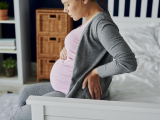New findings from two studies have tied use of the antiviral drug nirmatrelvir-ritonavir (Paxlovid) to a reduction in COVID-19 hospitalizations and death, as well as to faster resolution of symptoms and less use of healthcare resources.
Benefit seen only in older patients
For the first study, published in Clinical Microbiology and Infection, a Medical University of Vienna–led research team compared the effectiveness of Paxlovid with that of the antiviral drug molnupiravir (Lagevrio)—and with that of not receiving an antiviral—against hospitalization and all-cause death from January 2022 to May 2023. Participants were adults with mild to moderate infections and one or more risk factors for severe illness caused by the SARS-CoV-2 Omicron variant.
"The oral antivirals nirmatrelvir-ritonavir and molnupiravir are the mainstay treatment for Covid-19 in non-hospitalised adults at increased risk of severe disease," the study authors wrote. "Both oral antivirals were approved at the time of the study period (2022/2023) for the treatment of non-hospitalised patients with mild-to-moderate Covid-19, but the current National Institute of Health guidelines favour nirmatrelvir-ritonavir over molnupiravir."
Of the 113,399 eligible COVID-19 patients in the retrospective cohort study, 10.7% received Paxlovid, 9.5% received molnupiravir, and 80.0% served as untreated controls. Over 96% of participants were previously infected with or vaccinated against COVID-19.
Future studies are needed to better define target populations that show greater benefit from treatment with nirmatrelvir-ritonavir.
A total of 0.43% of Paxlovid recipients, 1.4% of molnupiravir users, and 1.13% of controls were hospitalized within 28 days (risk difference [RD], -0.7%; Paxlovid vs control RD, 0.26%). No Paxlovid recipients and 0.13% each of molnupiravir users and controls died.
The estimated risk of hospitalization was 0.57% in Paxlovid users and 1.09% in controls (adjusted RD [aRD], -0.53%). The estimated risk of death was 0.0% in the Paxlovid group and 0.13% in controls (aRD, -0.13%).
The number of patients needed to treat to prevent hospitalization and death was 190 in Paxlovid recipients and 792 in controls, respectively. These statistically significant aRDs were seen only among patients 60 years and older.
The estimated risk of hospitalization in the molnupiravir analysis was 1.36% in the molnupiravir group and 1.16% among controls (aRD, 0.2%). The estimated risk of death was 0.12% in molnupiravir recipients and 0.14% in controls (aRD, -0.01%).
"Among outpatients aged ≥60 years with Covid-19 in an Omicron-dominated era, treatment with nirmatrelvir-ritonavir was associated with a lower risk of hospitalisation and all-cause death within 28 days, albeit with wide confidence intervals and high numbers needed to treat," the study authors wrote.
"This finding was not observed in molnupiravir users and younger nirmatrelvir-ritonavir users. Future studies are needed to better define target populations that show greater benefit from treatment with nirmatrelvir-ritonavir," they concluded.
Proportion of patients seeking care slashed 73%
The second study, a phase 2/3 randomized clinical trial published today in Clinical Infectious Diseases, also found protection against COVID-19 hospitalization and death in adults receiving Paxlovid and demonstrated a faster resolution of symptoms and lower use of healthcare resources compared with a placebo in high-risk patients.
The importance of having effective COVID-19 treatments such as NMV/r [Paxlovid] to reduce burden on healthcare systems, both ambulatory and hospital based, should not be underestimated.
The research was led by researchers from Pfizer, which developed Paxlovid. The drug was given to 977 symptomatic COVID-19 patients, while 989 were given a placebo, at 343 sites in 21 countries from July 2021 through December 2021, a Delta-predominant period.
Paxlovid significantly shortened the time to symptom relief (median, 13 vs 15 days; hazard ratio [HR], 1.27) and resolution (16 vs 19 days; HR, 1.20) through 28 days and cut the number of COVID-related medical visits by 64.3% and the proportion of patients seeking care by 73.2%.
In total, 0.9% of Paxlovid recipients and 6.4% in the placebo group were hospitalized, for a relative risk reduction of 85.5%. Hospitalized Paxlovid recipients had briefer hospital stays, and none required intensive care or mechanical ventilation. Fewer patients in the Paxlovid group needed other COVID-19 treatments, and none died by 6 months, compared with 15 in the placebo group.
"The importance of having effective COVID-19 treatments such as NMV/r [Paxlovid] to reduce burden on healthcare systems, both ambulatory and hospital based, should not be underestimated," the authors wrote.



















